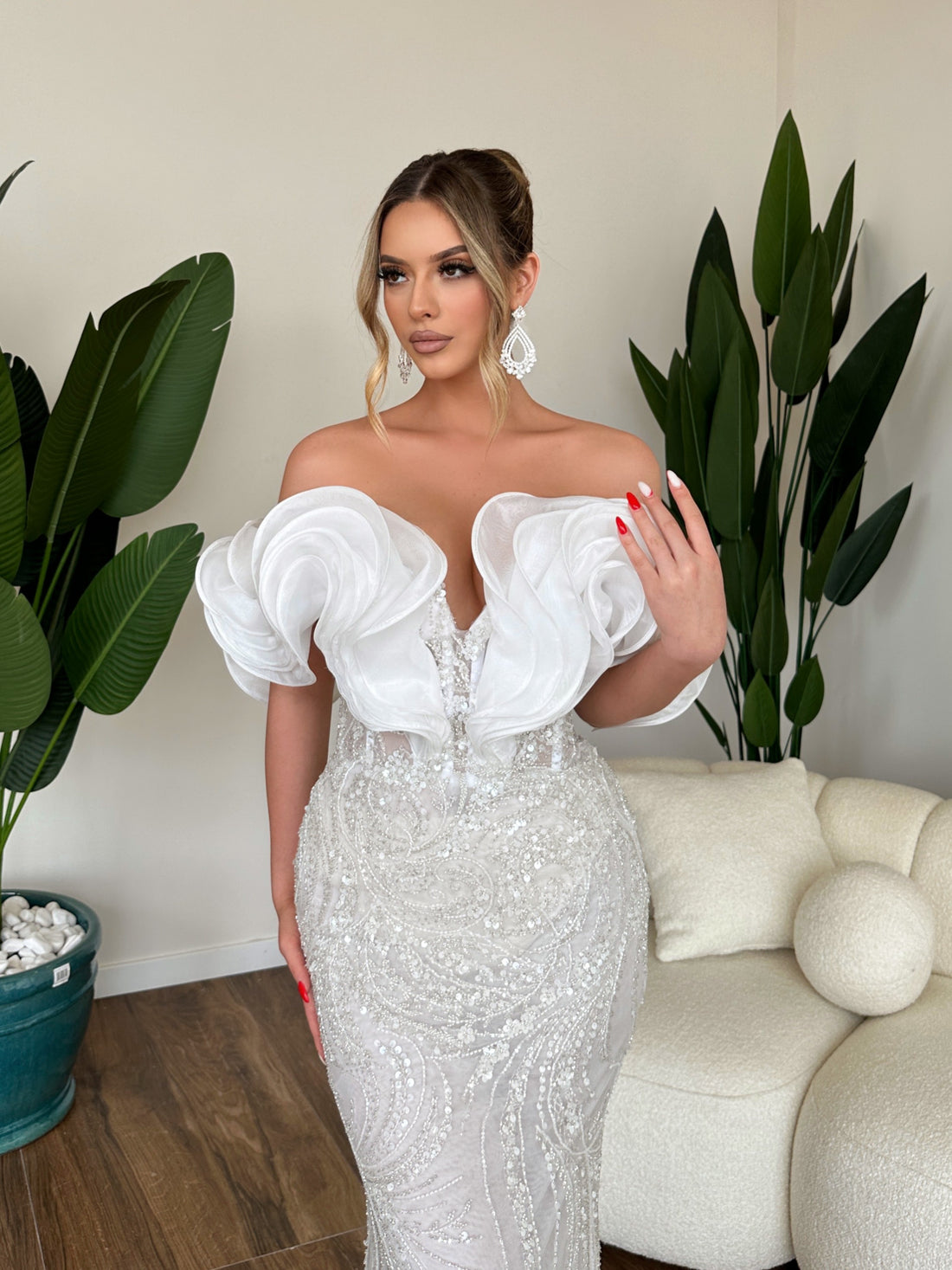
Black Tie vs White Tie: How to Choose the Perfect Dress for Formal Events
Share
When it comes to dressing for formal events, deciphering dress codes can be a challenge. Two of the most formal dress codes, black tie, and white tie, often leave people puzzled about what to wear. These dress codes signify a level of sophistication and elegance, each with its distinct requirements.
Let’s delve into the differences between black tie and white tie dress codes, helping you make an informed decision for your next formal occasion.
Understanding Dress Codes for Events
Dress codes serve as a communication tool, indicating the level of formality expected at an event. They have historical origins and reflect social norms of the time. While there are various dress codes, black tie and white tie are reserved for the most upscale affairs.
Black Tie Dress Code
The black tie dress code, also known as formal attire, is characterized by elegance and sophistication. Men's attire for a black tie event includes a black tuxedo jacket, matching trousers, a white dress shirt, a black bowtie, and black patent leather shoes.
This ensemble signifies a balance between formal and stylish, making it suitable for a range of events, from weddings to galas. For women, black tie attire provides more flexibility. Floor-length gowns are a popular choice, ranging from classic black dresses to more vibrant hues.
The key is to opt for dresses made from luxurious fabrics and elegant cuts that complement the occasion. While not mandatory, wearing gloves can add an extra touch of sophistication.
White Tie Dress Code
White tie, often referred to as full evening dress, is the epitome of formal attire. This dress code is rarely encountered outside of royal events, state dinners, and elite gatherings. For men, white tie requires a black tailcoat, a white wing-collared shirt, a white bowtie, a white waistcoat, and black patent leather shoes. The ensemble is completed with black formal trousers and accessories like a white pocket square and cufflinks.
Women's attire for a white tie event is characterized by full-length ball gowns, often featuring elegant embroidery and luxurious fabrics. The emphasis is on modesty and grace, with dresses typically featuring long sleeves and a demure neckline.
Elbow-length gloves and sophisticated jewelry are essential to complete the look.
Dress Types for Black Tie and White Tie Events
The dress you choose for a black tie or white tie event should align with the dress code's requirements. Here are some guidelines to consider:
Black tie dress types
Floor-length gowns: For women attending a black tie event, floor-length gowns are the go-to choice. These gowns exude elegance and create a formal silhouette suitable for the occasion. Optimal for classic colors like black, navy, or deep red for a timeless look.
Cocktail dresses: While floor-length gowns are the norm, some black tie events allow for cocktail dresses. However, these dresses should still be sophisticated and well-tailored. Choose dresses with intricate details and luxurious fabrics.
Accessories: Accessorize your black tie attire with statement jewelry, such as chandelier earrings or a sparkling necklace. A clutch purse and elegant heels complete the look.
White tie dress types
Full-length ball gowns: Women attending a white tie event should opt for full-length ball gowns that are both elegant and regal. Look for dresses with classic designs, such as A-line or princess-cut silhouettes, and choose rich, luxurious fabrics.
Modest necklines and sleeves: White tie events call for modesty, so choose dresses with high necklines and sleeves. This adds an element of sophistication to your ensemble while adhering to the dress code's requirements.
Gloves and jewelry: Elbow-length gloves are a signature accessory for white tie events. Pair them with sophisticated jewelry, such as pearls or diamonds, to enhance the overall look.
Picking the Right Dress: Black Tie vs White Tie
Choosing between a black tie and white tie dress code depends on the event's formality. Consider these factors:
Event Type: Black tie events are more common and encompass a range of occasions, from weddings to awards ceremonies. White tie events are exceptionally formal and are usually reserved for exclusive events.
Venue and Host: The venue and host can provide clues about the level of formality expected. High-end venues and prestigious hosts are more likely to have a white tie dress code.
Invitation: The invitation itself often includes information about the dress code. Look for keywords like "black tie," "white tie," or specific instructions regarding attire.
Cultural Context: Different cultures may interpret dress codes differently. Research the cultural context of the event to ensure your attire aligns with expectations.
Final Thoughts
Decoding dress codes can be a perplexing task, but understanding the differences between black tie and white tie dress codes simplifies the process. Both dress codes demand elegance and sophistication, with variations in attire and formality.
When choosing a dress, consider the event's nature, venue, and the level of formality indicated. By adhering to the dress code, you'll not only fit in seamlessly but also exude confidence as you navigate the world of formal events.
